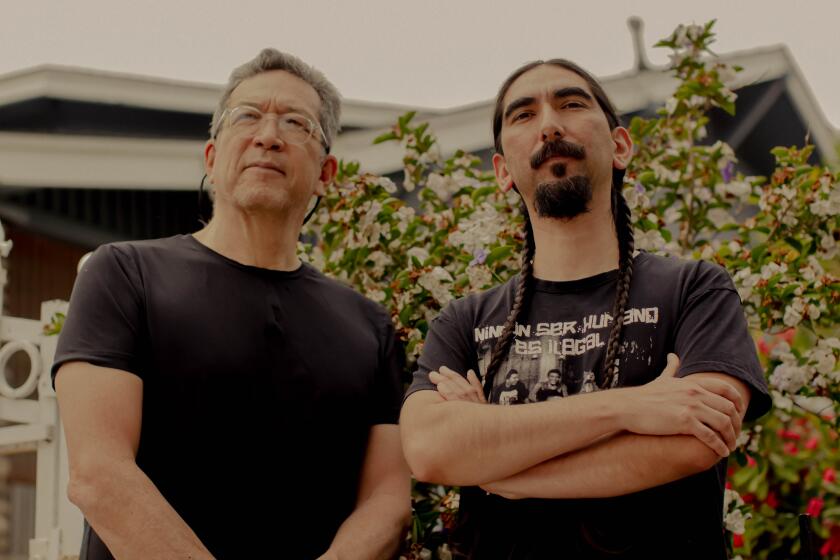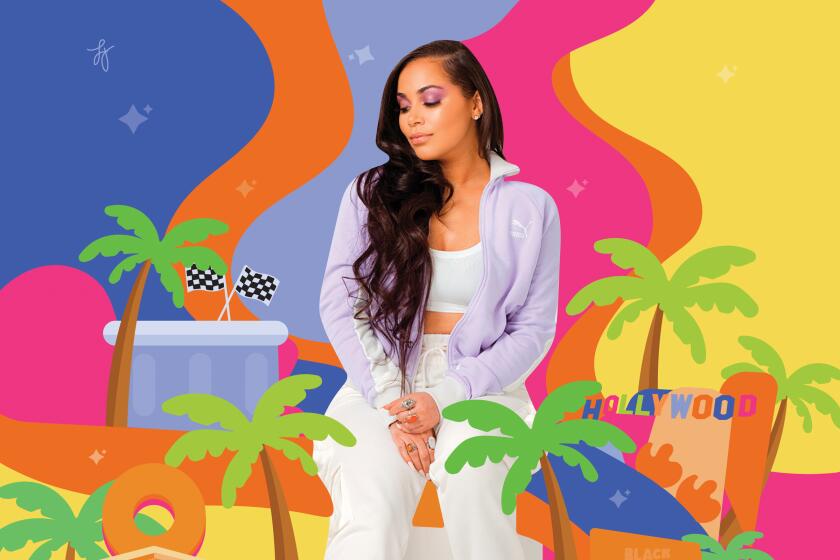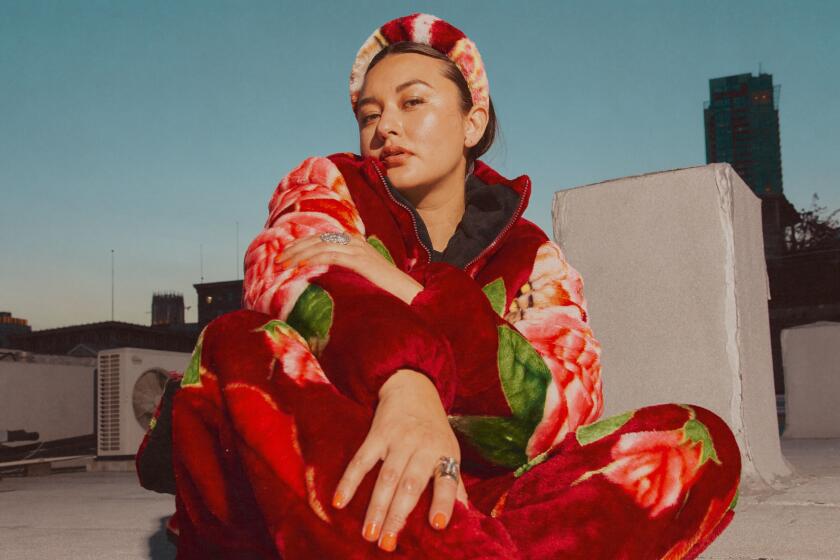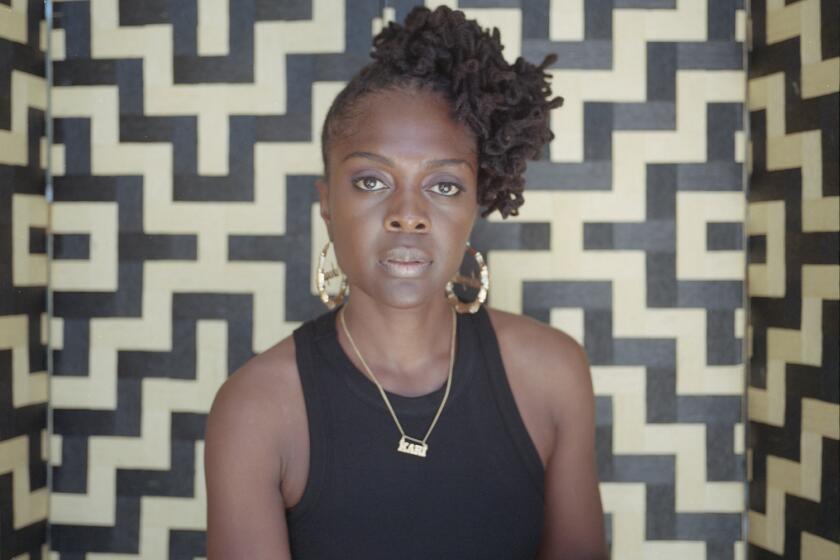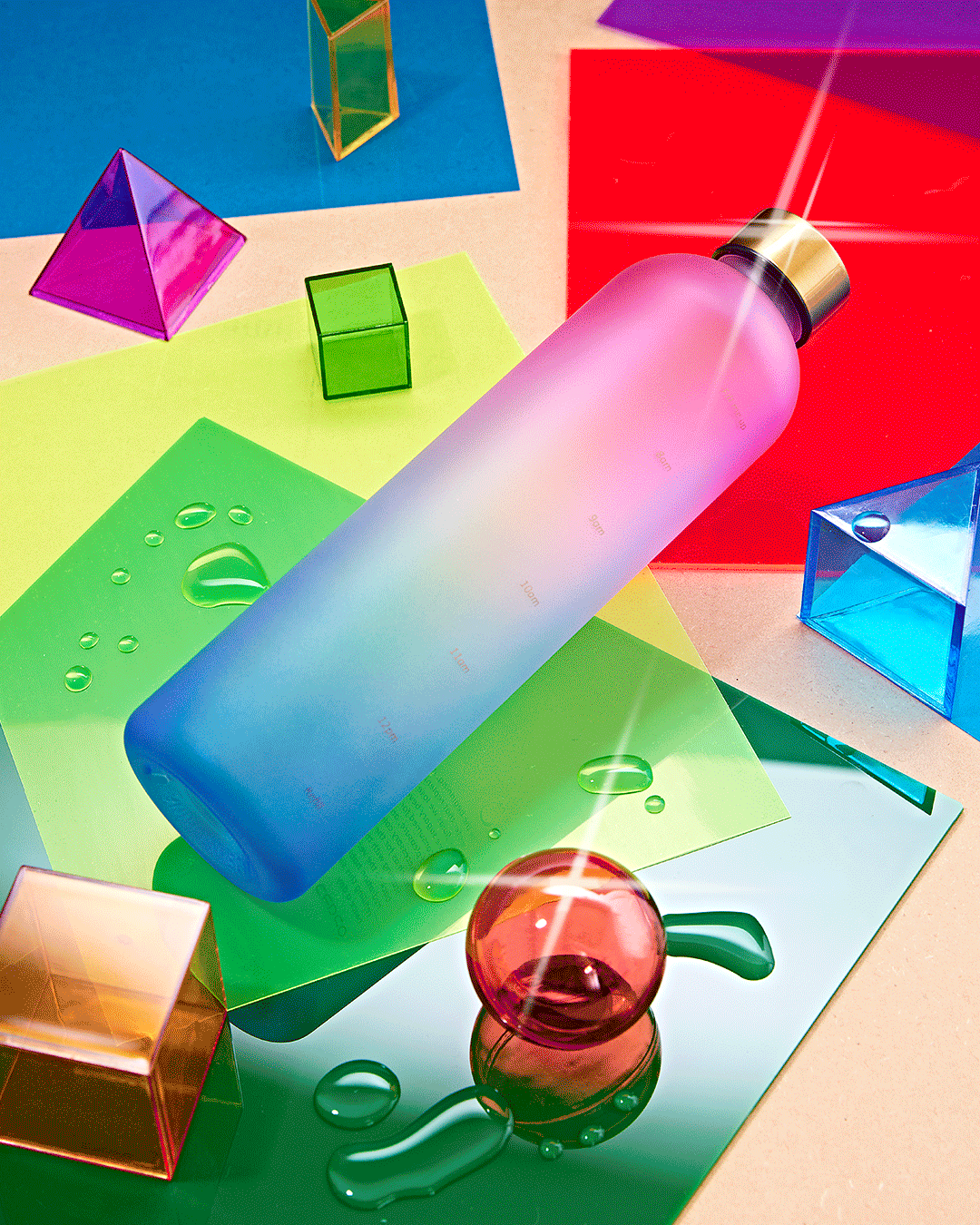
This story is part of L.A. — We. See. You!, the second issue of Image, which explores various ways of seeing the city for what it is. See the full package here.
Los Angeles is eternally thirsty. Staying hydrated in this madcap melting pot of a city is both a necessity and a collective obsession. We Angelenos can unwittingly spot the signs of dehydration from a mile away. The slight flake of dry, dull skin on your neighbor’s T-zone; the foolishness of the hiker who chugs down a can of flavored sparkling water at the peak of their excursion, only to remain parched.
Staying adequately hydrated about town requires a certain amount of premeditation, effort and an ability to solve several logistical problems. The gallon-sized, plastic one-off from Vons is functional for water “gains” — but only to an extent. Too heavy, no cooling function. The 32-ounce or 64-ounce aluminum multi-use bottle is much more the wave. In L.A., style is a derivative of utility, however.
It’s not enough to be prepared in L.A.; you must look the part.
It is hardly surprising, then, that designer water bottles — upscale utilitarian vessels with all the trappings of TikTok-worthy insignia — have been so quickly embraced around town, most notably in Hollywood. The designer water bottle bestows upon its wearer a sense of athleticism, (debatable) environmental awareness, and high-fashion literacy. In the past few months alone, I have clocked many iterations of these accessories.
At Gigi’s on a recent Friday, for example, a notable French model dined outdoors in top-to-toe leather, forgoing her handbag for a sleek steel Alexander McQueen water bottle, complete with a bondage-inspired leather holdall and slim straps, which she draped over one shoulder. Élégante on all counts. Yet the piece also communicated a certain steeliness, as though its owner was poised for potential action. Think Angelina Jolie in a pandemic version of “Tomb Raider.”
The activists undoing the racist gentrification of East L.A.
Indeed, one reason the designer water bottle has gained such traction in this part of town is because it integrates seamlessly with two favorite pastimes: eating out and hiking. Those wishing to witness the full spectrum of designer water bottles IRL should head straight to the epicenter of Hollywood hiking culture: Runyon Canyon Park. Spanning a wide gorge that runs from just above Franklin Avenue to Mulholland Drive, the 160-acre park has enchanted generations of locals since before it was casually frequented by 1930s screen stars such as Marie Dressler and Janet Gaynor, as well as after 1984, when it was officially named a public park.
Runyon is a bustling social breeding ground for big thinkers and even bigger dreamers. The views of the L.A. Basin are breathtaking, like at Griffith or Kenneth Hahn parks, but unlike the latter two, Runyon doesn’t always provide solace from the hubbub of the city. There’s a reason it’s known as “Runway Canyon” or, rather less affectionately, as “Silicon Canyon.” Many seek a quiet walk to the Andy Goldsworthy-esque peace spiral but inadvertently gain an impromptu ticket to a stand-alone monologue or capoeira-inspired dance performance. That’s all part and parcel of its charm.
On the trails, an individual’s style persona now is articulated through their choice of superior water bottle. Splashy styles, such as Chanel’s quilted lambskin flask (a snip at $4,895), bring status and fanfare to maximalists who actively seek out those qualities in this part of town. At the opposite end of the scale, Prada’s modest all-black take with logo-embossed carabiner ($85 but sold out) sets a cool, knowing tone for those who prefer to go incognito and likely wear a baseball cap.
More from issue 2 of Image
Darian Symoné Harvin talks to Lauren London about Nipsey Hussle, acting, and how seeking truth is an act of love
We wanted to know about the real L.A. So we asked our favorite Angelenos to show us
Ismail Muhummad meditates on how Noah Purifoy imagined a future where people aren’t discarded
Julissa James profiles the L.A. designer who remade the cobija into luxury fashion
Ian F. Blair talks to Kenturah Davis about language and the tradition of Black art from the foothills to South L.A.
Artsy types have even taken to personalization. My neighbor — a makeup artist with an enduring infatuation with Bob Mackie — recently confessed that he’d customized his crystal-embellished Collina Strada bottle with vintage silk scarves, so it functions as a “kind of large, psychedelic necklace thing” when he hikes Runyon with his bouncy Labradoodle, Bobby. Meanwhile, bendy gals of the Goop-y kind (you know the type) seem to be supercharging their sleek, toxin-free Glacce gemstone bottles by slipping one or two crystal bracelets around its stopper.
It is almost too easy to poke fun at those who would invest in such a nonsensical item. After all, no one really needs such a bourgeois water bottle. Especially one that rings in at just under $5,000 and likely will end up at the RealReal on Melrose Avenue come September.
However, there is still a desirable lightness to this trend that feels rather comforting. Any viable solution to the 50 billion plastic water bottles that Americans purchase every year — only about 23% of which are actually recycled within the U.S. — shouldn’t necessarily be subject to ridicule.
Whether we like it or not, clothing is a visual language that plys complex threads of cultural, political and historical significance. Wearing a corset, for example, can be contentious, as can a tartan kilt or a real fur coat. In many ways, the designer water bottle is a style tonic to the times. A playful, fairly pragmatic expression that is devoid of agenda. During a period marked by a global health crisis, grave civil unrest and staggering unemployment, it’s simply a beautiful distraction that suits Hollywood perfectly, if nothing else.
Natalie Rigg is an L.A. transplant who enjoys writing about style and culture. Her work has appeared in the New York Times, AnOther, Vogue and Wallpaper.
